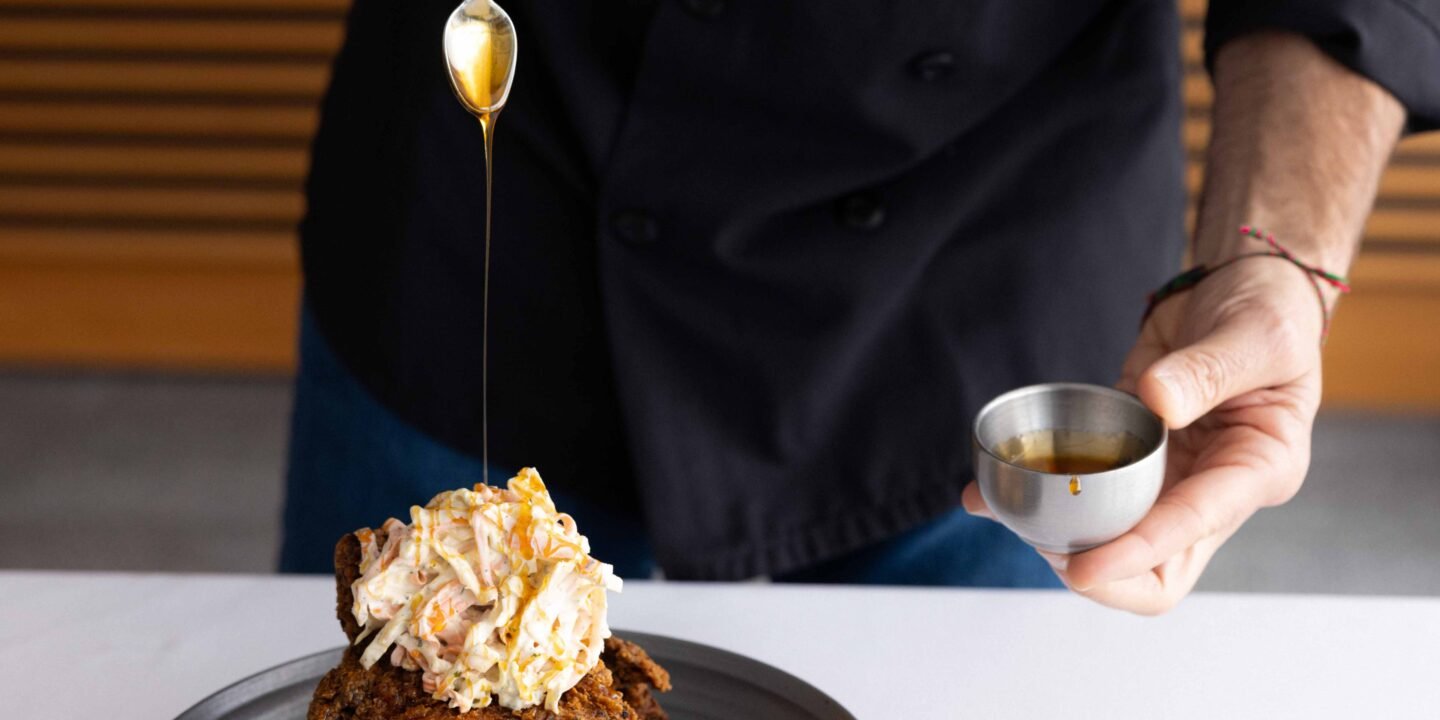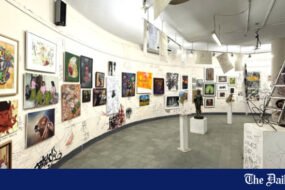

Why does someone visit a museum? Perhaps it’s to see the permanent displays of works from the collection or the special exhibitions. My best friend’s boyfriend said his book group went to the art museum after seeing the movie Girl with a Pearl Earring. Then again, maybe it’s just because the lunch menu sounds so good.
“In the past, museums were more academic. They were places to go see things,” Adrienne Horn, president of San Francisco-based Museum Management Consultants, told Observer. “Increasingly, they are becoming gathering centers, where there are a lot of things to do.” The aim of today’s evolving art museum—and more accurately, its shifting business model—is to embed the institution into the fabric of everyday life, “creating value in the community” and, through this, generating more revenue.
Food is a significant part of this strategy, and major metropolitan art museums are bringing award-winning chefs aboard as a way to draw attention to their cafés and upscale in-house restaurants. Museum dining spots are increasingly written up in Michelin and Zagat guides, reviewed in magazines such as Bon Appétit, Food & Wine and Travel & Leisure, and promoted by the institutions themselves. The Museum of Modern Art’s restaurant The Modern—one of six options on-site for a snack, drink or full meal—is extolled by Michelin as capturing “the iconic feel of the MoMA in which it is housed,” adding that “the staff perform a veritable ballet as they present diners with such appealingly nuanced dishes as a seed cracker with aged cheddar and butternut squash butter; or eggs on eggs, starring none other than soft-boiled eggs with sturgeon caviar. Turbot roasted on the bone may then arrive alongside rich parmesan cream.” Would that the art exhibitions were described in such lavish terms!
Gary Tinterow, director of the Museum of Fine Arts Houston, was suitably impressed, saying that “getting a Michelin star rating was a goal for me”—a goal he and the museum achieved with their restaurant Le Jardinier. “Accomplished sauces, seasonal vegetables and thoughtful cocktails tell a story in line with the restaurant’s name and design,” according to Michelin.
Tinterow eats at the museum restaurant regularly, he said, but ensuring a good meal wasn’t the point. “The restaurant brings people to the museum who would not otherwise come—who might not even know that we exist.”
SEE ALSO: The Louvre and Other French Institutions Prepare to Raise Ticket Prices for Non-E.U. Visitors
Many of those people do just come for the food without visiting the museum, which is possible because Le Jardinier has a separate street entrance, allowing those with an appetite for food and not art to bypass the $24 adult admission. But the restaurant may be an entrée to the museum for some, leading diners to become visitors, members, spenders and donors. That’s important financially. The museum’s food service—which includes Le Jardinier, a more casual café (Café Leonelli) and catering for weddings and events—brings in $6 million annually, or nearly 7 percent of its $90 million budget.
Perhaps the clearest sign that museum cafés and restaurants are competing with each other and local dining scenes is the fact that menus are now featured on the institutions’ websites. Visitors browse not just for exhibitions and ticket prices but also for the catch of the day. This is further proof that the museum café doesn’t simply support the visitor experience—it’s often the reason for the visit.


Is this just follow-the-leader, or do museums know something about today’s art-going public? Most likely, it’s both. Food serves several purposes here. Dining options keep visitors inside a museum longer. They provide a social space, turning the museum into an amenity. A café or restaurant gives people a reason to become members, as it typically comes with a 10 percent discount at eateries and the museum shop. Quality food offerings can also entice people to host events at the museum.
At the Oakland Museum of California, food is one way the institution is competing with other attractions. The old basement cafeteria no longer cuts it, and so the museum opened Town Fare Café. “People have higher expectations about what they eat now than in the past. The bar has been rising,” museum director Lori Fogarty told Observer. “When I meet with colleagues, we all say that it’s unbelievable how much time we’re all thinking about the restaurant.”
At the Cleveland Museum of Art, the competition includes the nearby Museum of Natural History (whose restaurant, Exploration, touts “quality signature cuisine showcasing local, seasonal ingredients”), the Botanical Garden with its Garden Café and Case Western Reserve University. “We compete with them and with other restaurants in the area,” said Todd Mesek, chief marketing officer at the Museum of Art, which offers both the Provenance Restaurant and Provenance Café. “None of these other institutions have both a restaurant and a café,” he added, noting that Cleveland is becoming a foodie town. “We want visitors to stay, not to say ‘Oh, it’s lunchtime, where should I go to eat?’” He aims to win the battle of the stomach.
Food also shapes the museum’s public identity. Some institutions pair menus with exhibitions—French cuisine for Impressionist shows, Japanese for Yayoi Kusama. Most restaurants can’t match that kind of thematic flexibility. In 2018, the Brooklyn Museum mounted an exhibition called “David Bowie Is,” featuring costumes, lyric sheets, album art and video. The Norm, its restaurant, staged four nights of Bowie-themed food and drink. One night’s menu:
Diamond dogfish & chips
House-made tartar sauce, cabbage slaw
An homage to one of Chef Saul Bolton’s favorite Bowie albums, Diamond Dogs. Of course, it also references Bowie’s English origins and in England, for decades, fish ‘n’ chips has commonly been made with dogfish caught off the East Coast of the U.S. and exported to the U.K. So, yes, this dish is made with dogfish, which is growing in popularity here among those committed to sustainable fish sourcing. That practice has long been embraced by Great Performances, the premier New York City catering and retail hospitality concern that operates The Norm, as well as the Brooklyn Museum’s Café and is the exclusive caterer for events at the museum.
Croque monsieur
Gruyere, ham, béchamel sauce, greens
An oft-documented Bowie favorite, particularly the off-the-menu one made for him at a NYC restaurant where he was a regular. What distinguished it and The Norm’s rendition is the sauce actually being a Welsh rarebit sauce, incorporating beer and Worcestershire Sauce
Curried hand pies
Potatoes, peas, raita sauce
Another Bowie favorite, savory hand pies. This one boasts an Indian accent as a nod to the large Indian population of Bowie’s birthplace, London.
Shepherd’s pie
Ground beef, onions, Yukon gold mash
Yet another one of Bowie’s go-to dishes and a British comfort food staple. This is a rather classic version, although Bowie was known to enjoy creative variations on the traditional shepherd’s pie.
Warm Bavarian pretzels
Spicy queso, mustard
Museums are upscaling their food because other institutions are doing the same, and everyone is chasing the same visitor, creating a kind of culinary arms race. “We are definitely in competition with area restaurants,” Michael Bodell, chief operating officer of Petersen Automotive Museum in L.A., told Observer. Its restaurant, the Meyer Manx Café, sees 20 to 30 percent of customers come just for the food, according to general manager Nico Harward.
Since 2024, “we’ve doubled down on our café,” said Brad Pritchett, chief experience officer at the Dallas Museum of Art. “We renovated the space, improved the menu, the chef, the experience.” Before that, only 5 percent of visitors came solely to eat. Now it’s 17 percent.
“I’ve traveled all over the world, visiting museums and their restaurants,” Tinterow said. “I wanted the Museum of Fine Arts Houston to offer a dining experience comparable to the best I’ve experienced, such as at the Rijksmuseum and the Modern.” Who needs art?










